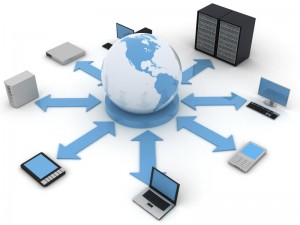
You may not have known it, but April 9 is Internet of Things Day – a day touted by its organizers as a worldwide event bringing together makers, entrepreneurs, industry leaders and citizens to discuss, design and develop the emerging Internet of Things (IoT). While it doesn’t have quite the pie-eating appeal of Pi Day (March 14), Internet of Things Day is an excellent time for marketers to take stock of the many connected devices and how they increasingly impact the customer experience.
Let’s consider first what IoT is: very simply, it’s connected “things,” devices, machines, tools or systems. They’re connected to each other, and they’re connected to the internet, meaning they can be connected to people (i.e. your customers) in multiple ways.
Mobile technology and the near-ubiquity of Internet access now makes it possible to connect even the most mundane devices and enable users to monitor or manage them remotely. Increasingly, these things are wearable devices that collect data that is highly personal in nature, and in all cases there are enormous opportunities presented by IoT - generally falling into one of two categories:
- The ability for users to access the information from the device, and
- For marketers to gain real-time insights into the needs and behaviors of the device users.
And both of those categories have the ability to directly or indirectly impact the customer experience.
Customer Experience
One of my favorite stories of how those two categories come into play is how Vail Resorts uses RFID technology and analytics to fuel EpicMix: a groundbreaking online and mobile application that lets skiers and riders effortlessly capture and share their mountain experiences with friends, family – and the rest of the world. Through the outlet, guests can easily share stories and achievements without interfering with their powder day.
What happens is EpicMix tracks skier data, such as vertical feet, number of lifts ridden and days skied – and it awards digital pins for mountain exploration. Pins give the ski day a gaming aspect that motivates and challenges guests to experience the mountain like never before. The way it works is that radio frequency (RF) technology is embedded in every guest pass at Vail Resorts. This technology captures data and stores it, starting with the very first lift ride. The information is accessible in real time at epicmix.com and through the resort’s mobile applications.
In its first season, EpicMix was a huge success. Nearly 100,000 guests activated their EpicMix accounts. Forty percent downloaded the mobile apps and nearly 6 million digital ski pins were given out. On top of that, 45 percent of the users chose to share their accomplishments on Facebook and Twitter – resulting in more than 35 million social impressions. And what it did was turn their customers into brand ambassadors by enhancing their experiences at the resorts and letting them share them and savor the experiences over and over.
For more details about the Vail Resorts story, download this interview conclusions paper, called Vail Resorts Creates Epic Experiences with Customer Intelligence.
Marketing Responsibility
As we consider all the positive customer experiences enabled by IoT, we must also remember the responsibility that comes with that potential. As the steward of the customer relationship and its data, marketing should concern itself with managing and safeguarding customer data as the valuable corporate asset that it is. And considering the volume, velocity and variety of that customer data, it’s a classic Big Data challenge. Equally important is the idea that unauthorized access to that data pose potential dangers to our customers, so once you have customer data you need to safeguard it.
To delve further into the concept of big data privacy, a good starting point is this post by my colleague Tamara Dull, What are we doing about big data privacy?
For a nice high-level primer on data security, I suggest this post by my colleague Anne-Lindsay Beall, No happy holiday for hackers: Five steps retailers must take to beef up cybersecurity
And whatever you do, don’t let the day go by without considering how devices come into play for the customer experience. Let me know what you think. And as always – thank you for following!
